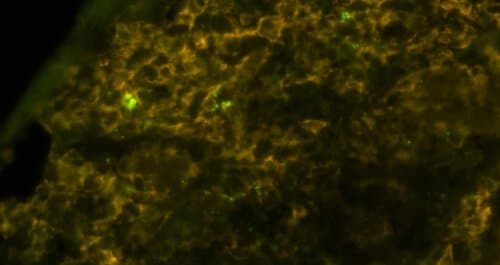This is how bacteria turn the cells of the immune system into an all-inclusive hotel: bacteria swallowed by macrophages sometimes succeed not only in surviving but even thriving inside them, as if they were incubators that help spread the infection in the body - and not soldiers in the service of the immune system
Disease-causing bacteria sometimes resort to nefarious tricks: they take over the body's defenses and harness them for their own purposes. Weizmann Institute of Science scientists revealed recently A ploy of this type, which serves the salmonella bacterium.
Salmonella bacteria can, as we know, cause intestinal disease, but if they enter the bloodstream - and from there reach the liver, spleen and other organs - they can cause a much more serious disease, which can even be fatal. When this happens, immune system cells called macrophages (from Greek: big gobblers) go into action and engulf them in order to stop the spread of the infection. Surprisingly, the ingested bacteria sometimes manage not only to survive inside the macrophages, but even to thrive inside them, as if they were incubators that help spread the infection in the body - and not soldiers in the service of the immune system.

To understand how successful this salmonella trick is, decide on the group of Dr Roy Avraham from the biological control department to focus on the metabolic environment of the macrophages in which the ingested bacteria work. When the scientists, led by research student Gili Rosenberg, exposed macrophages to salmonella bacteria, they saw that the metabolism of the macrophages underwent a significant change: instead of producing energy as usual in the mitochondria - the powerhouses of the cell - they began to burn large amounts of glucose. When the scientists stopped the changes in metabolism, the bacteria inside the macrophages became, contrary to expectations, less violent.
The researchers concluded from this that the degree of violence of Salmonella depends in some way on the changes in the metabolism of the macrophages. After examining the various substances stored in the macrophages as a result of the fight against salmonella, the scientists decided to focus on one of them: succinic acid which gives the signal to activate the macrophages' defense programs against invaders.
To their surprise, the scientists discovered that the bacteria learned during evolution to use this substance to their advantage: the acid activates bacterial genes that help Salmonella grow a "needle" that pierces the sheath that surrounds it inside the macrophage and allows Salmonella to inject into the cell that houses proteins that ensure the bacteria's intracellular survival. If that's not enough, the succinic acid also activates a mechanism that protects the salmonella from antimicrobial peptides secreted within the macrophage. In this way, the macrophage actually becomes - with the help of the succinic acid - a kind of "all-inclusive hotel" that takes care of all the needs of the salmonella bacteria.
To make sure that the succinic acid is indeed the one responsible for the chain of events, the scientists engineered bacteria that cannot absorb the acid - and discovered that they do not survive inside the macrophages and are much less effective in causing infections in mice.
The findings of the study shed new light on salmonella infections and pave the way for future studies that will examine whether other intracellular bacteria that survive inside macrophages behave in a similar way. These include, among others, tuberculosis bacteria, Listeria bacteria - which can lead to meningitis and other serious infections - and Shigella bacteria, a common cause of intestinal diseases in children in African and South Asian countries. These findings may also serve as a basis for the development of drugs that will block the entry of succinic acid into bacteria. "Antibiotics kill all bacteria, even the good bacteria, but a drug that blocks succinic acid from entering the bacteria will only be directed against disease-causing agents," explains Rosenberg.
Dror Yehezkel, Dotan Hoffman, Leah Weinman, Noa Nissani, Dr. Sheli Chen Avivi, Dr. Shirley Brenner, and Dr. Noa Busel Ben Moshe from the Department of Biological Control at the Institute participated in the study; as well as Dr. Maxim Itkin and Dr. Sergey Malitsky from the Department of Life Sciences Research Infrastructures.
More of the topic in Hayadan:
